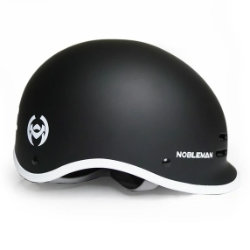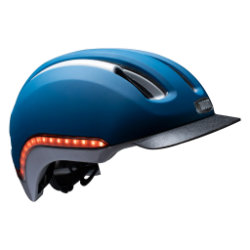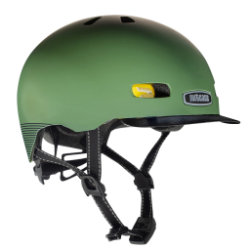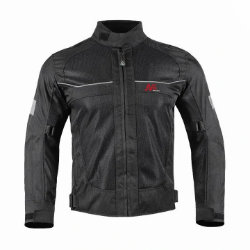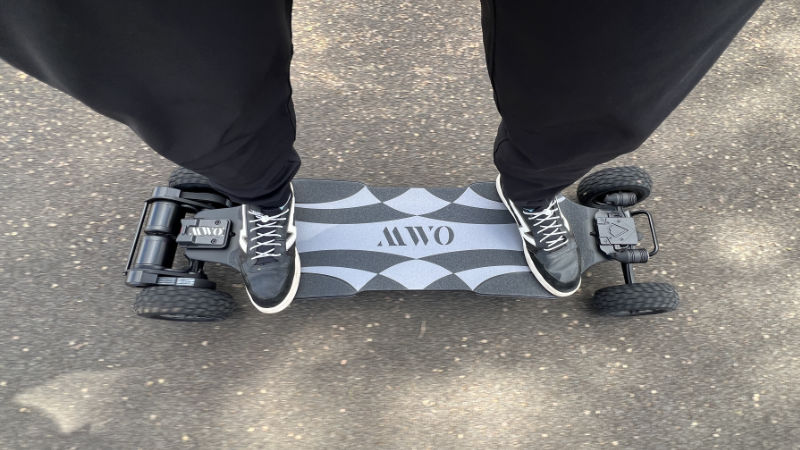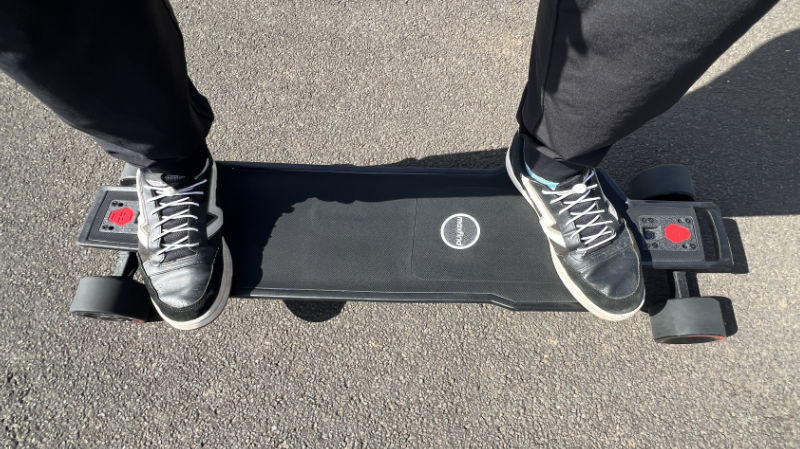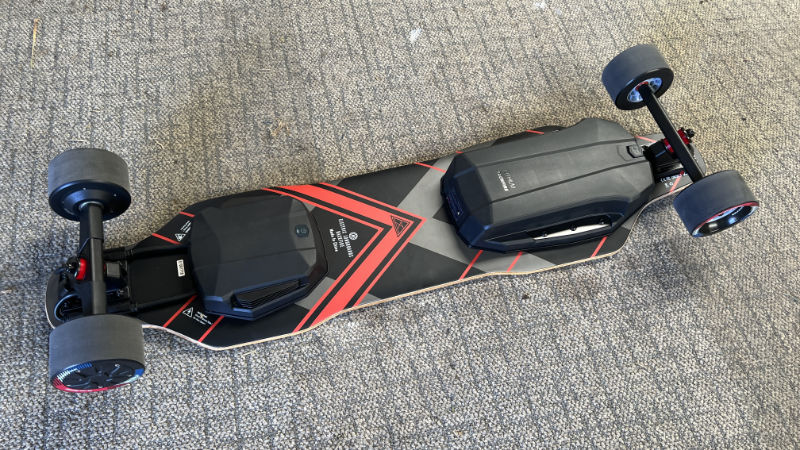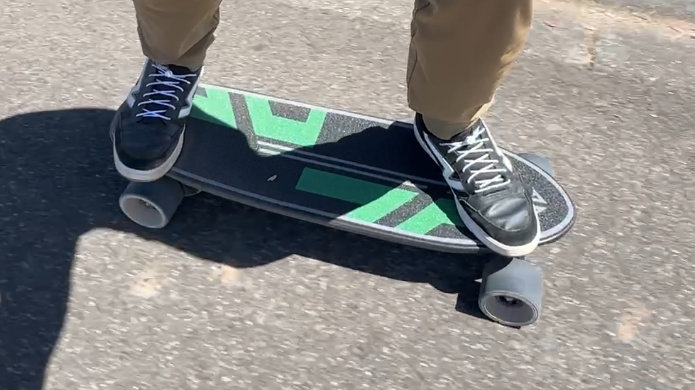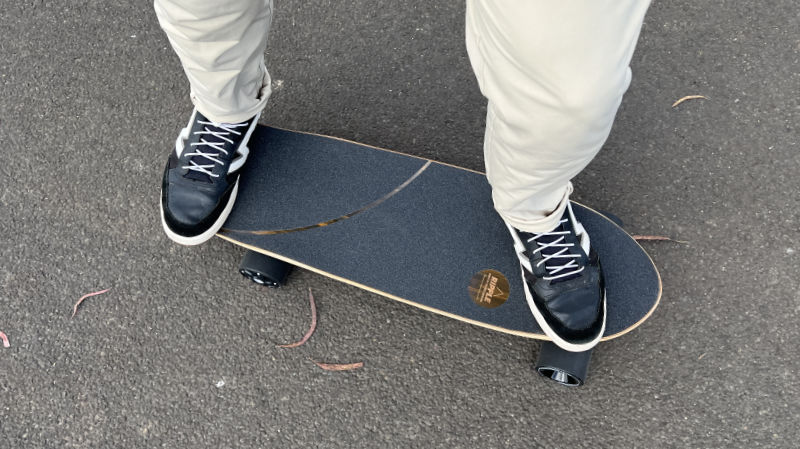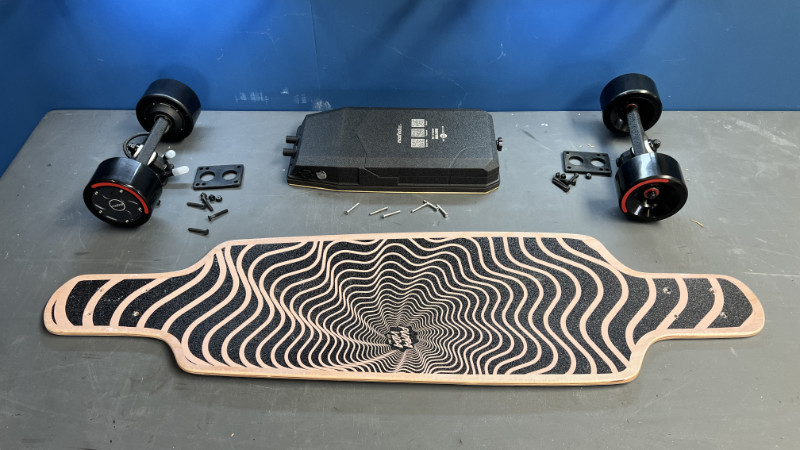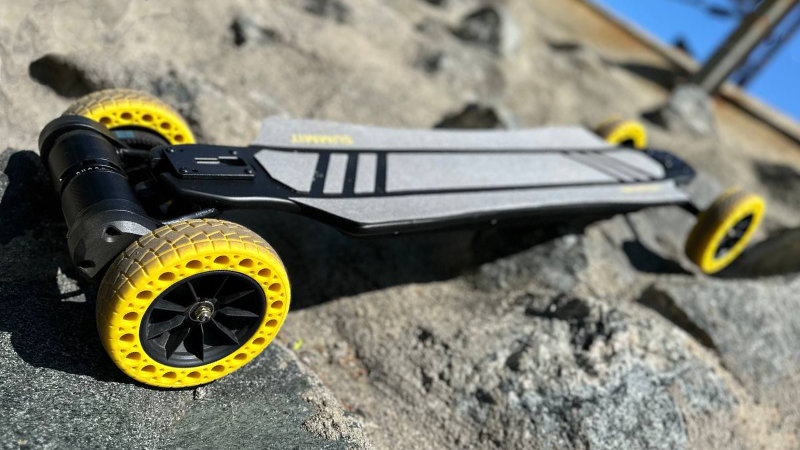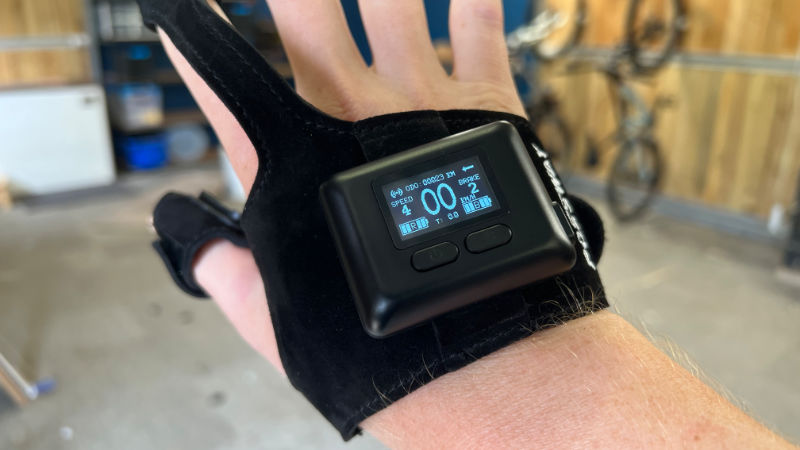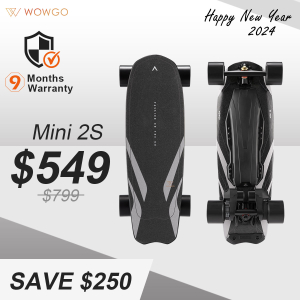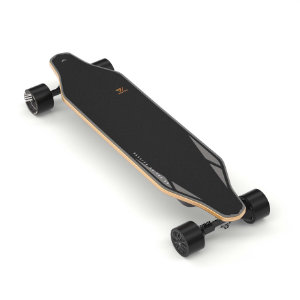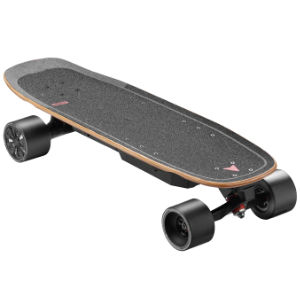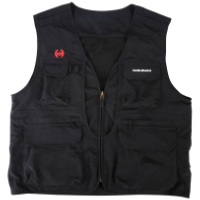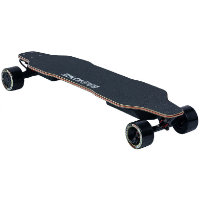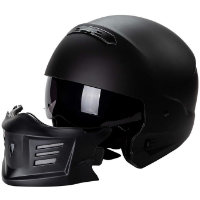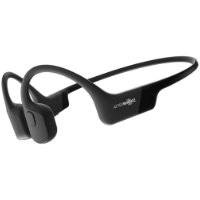What Is An Electric Skateboard?
An electric skateboard is a type of skateboard that is powered by an electric motor and a battery. The rider controls the speed of the skateboard using a remote control, or in some rare cases, by leaning their body weight in a certain direction. However, we’ll only be focusing on how eBoards work with remote controls because that is the most reliable and most common form of controlling an eSkateboard.
Electric skateboards are becoming increasingly popular as a means of transportation, especially in urban areas where they can be used to travel short distances quickly and efficiently. They are also seeing popularity for recreational use, especially on off-road terrains.
Components of an Electric Skateboard
Electric skateboards have all the same components as a normal skateboard, including:
Deck
Trucks
Wheels
However, electric skateboards are unique because they also have the following components:
Motors
Battery
Electronic Speed Controller (ESC)
Remote control
Deck
The deck, just like on a normal skateboard, is the main platform of the electric skateboard, and it is typically made of wood or a composite material such as bamboo, fiberglass, or carbon fiber. The deck is the part of the skateboard that the rider stands on, and its shape and size can vary depending on the style of skateboarding the board is designed for.
For example, a deck for a cruiser-style electric skateboard might be longer and wider than a deck for a street-style electric skateboard which tends to have a shorter wheelbase and a kick-tail.
The deck is also typically designed with concave shape, which allows the rider to lock-in their feet and maintain control of the skateboard.

Grip Tape
Grip tape is a rough, abrasive material that is applied to the top of the deck of a skateboard. It is typically made of sandpaper-like material that provides a rough, textured surface for the rider to stand on.
This is usually much the same as traditional skateboard tape.
There are a handful benefits to using grip tape on an electric skateboard. And I’d highly recommend that you don’t ride without it.
First of all, it helps to improve traction between the rider’s shoes and the deck, which can help to prevent slips and falls.
Second, the rough, textured surface of the tape can help the rider to maintain better control of the skateboard, especially when making turns or performing tricks.
Lastly, some electric skateboards have a small layer of foam between the tape and the deck that acts as a form shock absorption. This kind of grip greatly reduces fatigue and means you can ride for longer without feeling the need to get off and have a rest.
Trucks
The trucks are the metal parts of an electric skateboard that attach the wheels to the deck and allow the skateboard to turn.
They work exactly the same as they do on a regular skateboard.
The trucks are typically made of aluminium and consist of two main parts: the baseplate and the hanger. The baseplate is the part of the truck that attaches to the deck, and it has holes drilled in it that allow it to be mounted to the deck using bolts. The hanger is the part of the truck that holds the wheels, and it is connected to the baseplate with a set of bushings.
The trucks are an important part of the skateboard because they determine the skateboard’s turning ability and stability. Skateboard trucks come in different sizes ranging from 7″ to 12″.
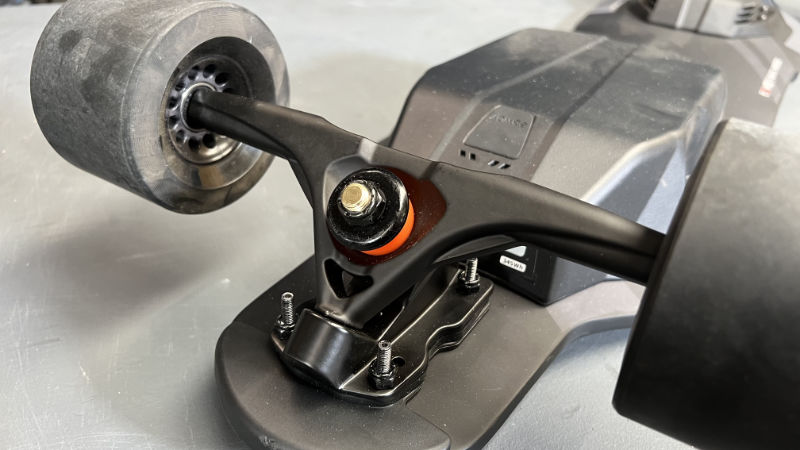
Wheels
There a lot of different types of wheels you can get for electric skateboards these days.
The three most common types are Street wheels, All-terrain wheels and Urban-terrain wheels.
As a general rule, the smaller the wheel is, the faster the acceleration and increased agility it will have. The larger the wheel is, the higher top speed it will be able to achieve.
Another important aspect of electric skateboard wheels you need to understand is their durometer. That is the hardness of the wheel.
Harder wheels are typically faster, but they offer less grip and a rougher ride. While softer wheels offer better grip and a smoother ride, they tend to reduce speed and battery performance.
Street Wheels
Street wheels are generally made of polyurethane (PU) and are smaller and harder than other types of electric skateboard wheels.
They range in size from 80mm up to 120mm and have a hardness of 78A-98A
They are designed to provide a fast and agile ride on paved surfaces such as sidewalks and streets.
A lot of the larger types of longboard wheels you would use on a regular skateboard are considered the smaller sized wheels on electric skateboards.
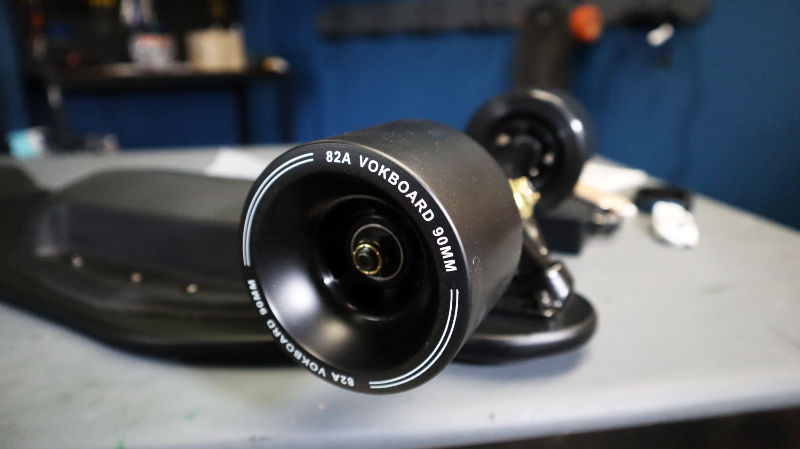
All-Terrain Wheels
All-terrain (AT) electric skateboard wheels are a type of wheel that is designed to be used on a variety of surfaces, including paved surfaces such as streets and sidewalks, as well as off-road surfaces such as dirt, grass, and gravel.
All-terrain wheels are larger and softer than other types of skateboard wheels, and they are designed to provide a smooth and comfortable ride on rough or uneven surfaces.
All-terrain wheels are usually 6-7″ in size, made of rubber and have a large tread in the tyre.
They are mostly pneumatic, meaning they are filled with air, just like a car tyre, however, it is now also common to see airless tyres.
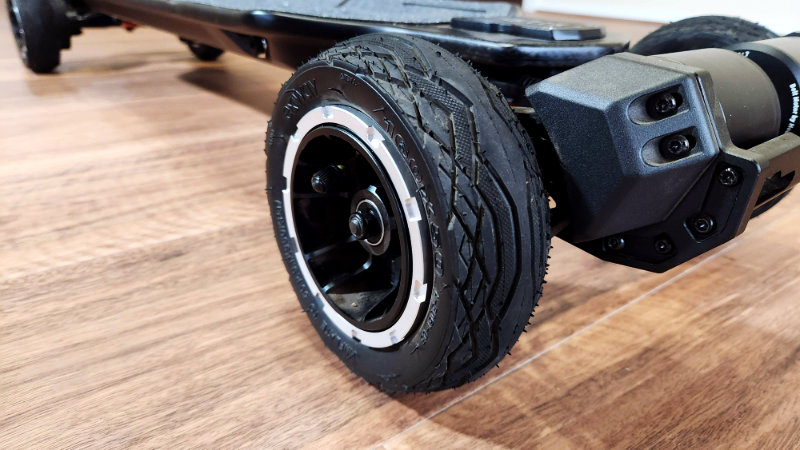
Urban-Terrain Wheels
Urban-terrain is a term that has only just become popular in the eskating industry.
These are wheels that fall in the middle between street and AT wheels.
They are usually 105-120mm, made of mostly polyurethane, and contain some kind of tread on the wheel.
These wheels are very popular because they maintain the electric skateboards speed, while being a lot more comfortable to ride even on uneven or rough roads.
Another benefit of these wheels is that they give you the ability to ride on gravel paths or grass. Albeit not as performant as true AT wheels, but you can get away with taking shortcuts through the park on these Urban-Terrain wheels.
A lot of electric skateboard brands are opting to use these types of wheels.
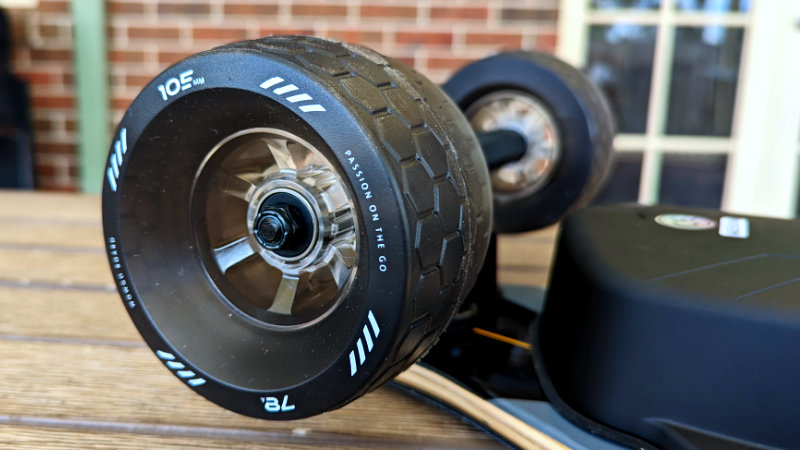
Motors
The motors of an electric skateboard are electric motors that provide the power to move the motorized skateboard.
The motor is powered by a battery, and it is controlled by a remote control that the rider uses to adjust the speed. Two components that we talk about a little later in this article.
There are two main types of electric skateboard motors: hub motors and belt-drive motors, however, there are also direct drive and gear drive options available, but less common.
Hub Motor
Hub motors are located within the centre of the wheels, and they provide direct power to the wheels. Hub motor electric skateboards are generally simpler, less expensive and require less maintenance than belt-drive motors, however they tend to be less powerful and less versatile.
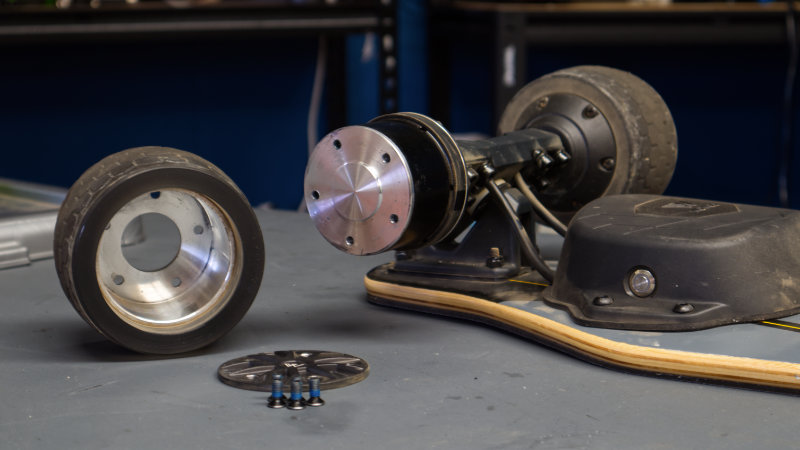
Belt Motor
Belt-drive motors, on the other hand, use a belt and pulley system to transfer power from the motor to the wheels. They are generally more powerful than hub motors and open up the ability to customise your wheels. However, they are usually more expensive and require more ongoing maintenance.
Generally, I prefer a belt motor electric board because they offer the versatility of having different wheel options.
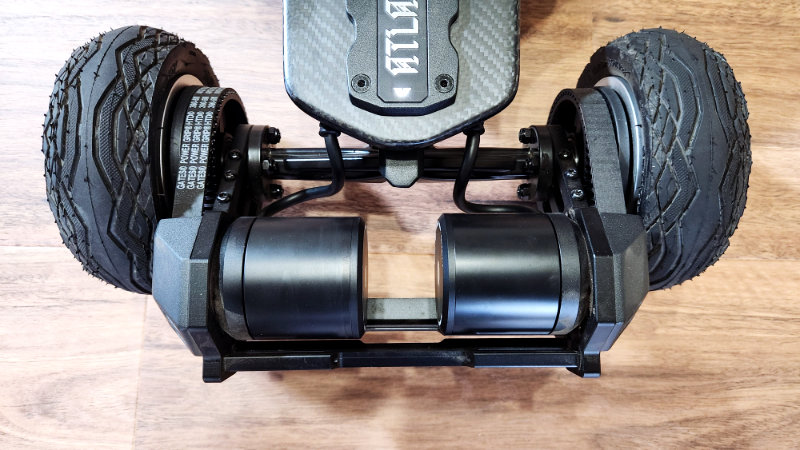
Direct Drive Motors
Direct drive motors are somewhat of a fusion between hub motors and belt motors. The sit outside of the wheel, however, they attach directly to the wheel to provide power.
For this reason, they are low maintenance, offer wheel customisations and are still powerful. The downsides of direct drive are that they are expensive and reduce the clearance between the motors and the ground.
Gear Drive Motors
Gear drive motors are relatively new and are similar to how belt motors work. They provide power from the motors to the wheels by connecting them with gears, instead of a belt.
They have the benefits of allowing wheel customisations and maintain their high power, however, because they are so new, we are yet to see how their durability holds up.
Battery
An electric skateboard’s battery are rechargeable batteries that power the electric motor in an electric skateboard.
The most common type are lithium-ion batteries, which are known for their high energy density.
The capacity of an electric skateboard battery is measured in watt-hours (Wh) and is what generally determines the range of the electric skateboard, with a larger capacity (higher Wh) battery allowing for a longer range between charges.
Once the battery runs flat, you simply plug one end of the supplied charger into the wall socket at home and the other end into the charging port on the electric skateboard.

Electronic Speed Controller (ESC)
An electronic speed controller (ESC) is the brains that controls the speed of an electric skateboard and sits between the skateboard’s battery and the motor.
The ESC takes input from the remote control and to determine the amount of energy that is needed to be sent from the battery to the motors.
ESCs typically include a number of protection features to ensure the safe operation of the electric skateboard. These features may include over-current protection, thermal protection, and over-voltage protection.
You will often see high end electric skateboards using a VESC which are a more advanced type of ESC and allows for much more control over the settings of your eBoard.
Remote control
The remote control is a small, handheld device that includes a thumb-operated joystick or trigger, which the rider uses to control the speed of the electric skateboard.
You also use the remote control to select the speed or braking modes. Some remotes even have extra features like cruise control, or an LCD screen that shows information like battery levels, distance travelled and current speed.
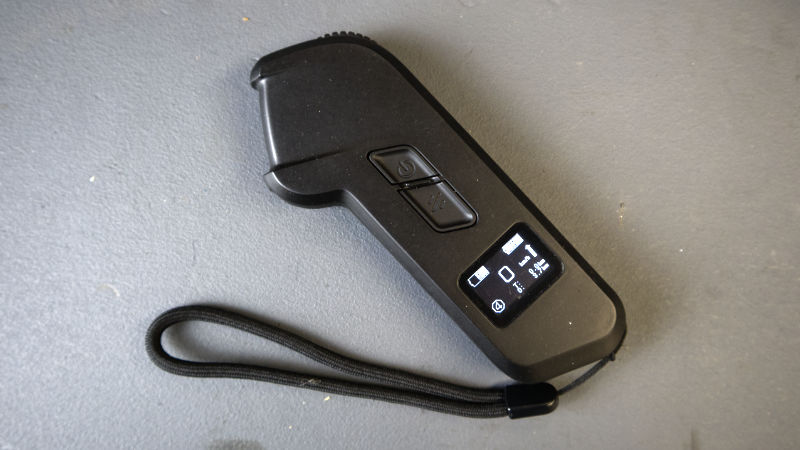
Brakes
One of the greatest benefits of electric skateboards is that unlike a regular skateboard, they have brakes.
You can quickly end up going really fast when riding an electric skateboard, so having brakes is essential for safety and control.
How Does An Electric Skateboard Work?
As we can see, there is a lot of technology that goes into the creation of electric skateboards.
Electric skateboards work by sending signals from the remote to the ESC which in turn sends power from the battery to the motors, which turn the wheels.
As technology continues to advance, electric skateboarding is becoming increasingly popular as a convenient and eco-friendly alternative to other modes of transport
It’s worth understanding how they work and the key components that power it, to make sure you make the right choice when considering buying an electric skateboard for yourself.
Are Electric Skateboards Safe?
Electric skateboards can be safe to use when operated in a responsible and safe manner. However, like most things, there are certain risks and hazards associated with riding an electric skateboards.
Please always follow the safety guidelines and instructions provided by the manufacturer including wearing appropriate protective gear, such as a helmet, knee and elbow pads.
You should also pay attention to your speed and the environment you are riding in.
Lastly, you should also familiarise yourself with the skateboard’s controls, as well as its capabilities and limitations before you set of riding.





